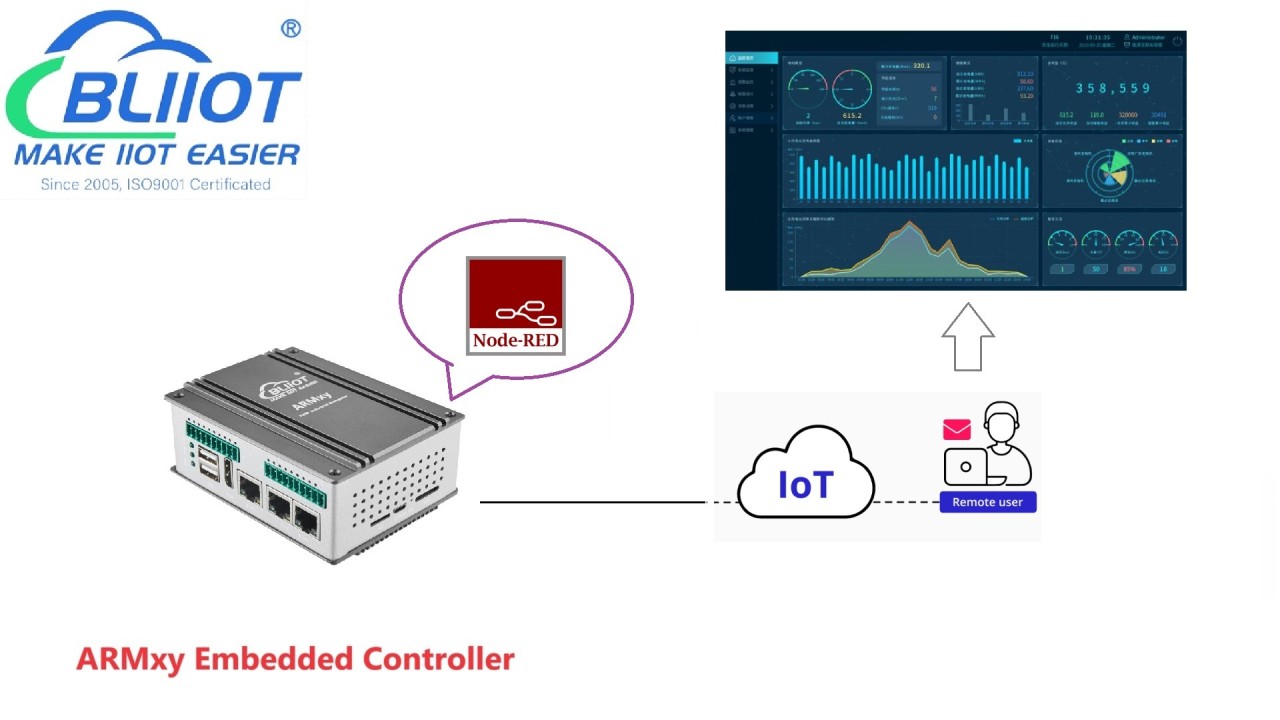Energy Management: Optimizing Building Energy Consumption with Node-RED and ARMxy
Energy Management: Optimizing Building Energy Consumption with Node-RED and ARMxy Edge Computing Gateway.
Introduction
With the increasing global attention to energy conservation, emission reduction and sustainable development, building energy management has become a key link in improving urban energy efficiency. Smart buildings use advanced sensing technology and information processing systems to monitor and control energy use to achieve efficient energy saving.
Node-RED Introduction
Node-RED is a process editor based on Node.js. It provides a web-based graphical interface that allows users to create application processes by dragging and dropping components. These components are called nodes, and each node represents a specific function, such as input, output, data processing, etc. The advantages of Node-RED are its ease of use, scalability, and native support for multiple communication protocols and technologies.

ARMxy Introduction
The ARMxy Series ARM Embedded Computers are designed for Industrial Automation, IIoT, EMS, Smart Cities, Digital Transormation etc. The ARMxy Series ARM Embedded Computers with flexible ARM SoM, I/O ports, there're 1000+ choices for applications.

Challenges of Building Energy Management
The main challenges of building energy management include how to collect and analyze a large amount of energy consumption data in real time, and how to implement effective energy-saving measures based on the analysis results. Traditional energy management systems often rely on complex hardware devices and proprietary software, which leads to high maintenance costs and inflexibility of the system. Therefore, an ideal solution should be easy to integrate, low-cost and highly customizable.
Use Node-RED to optimize building energy consumption
Environment Setup
First, make sure that the Node.js runtime environment is installed and install Node-RED according to the official guide. After the installation is complete, start the Node-RED editor through the command line:
node-red
This will open the Node-RED interface in the browser.
Create an energy management process
Set up input nodes: Drag appropriate input nodes from the palette, such as MQTT input or HTTP input nodes, to receive data from sensors in the building.
Data processing: Add function nodes or switch nodes to process and convert data formats. For example, convert temperature and humidity data into a format suitable for storage and analysis.
Data storage: Send the processed data to a database node, such as MySQL or MongoDB node, for data storage for further analysis.
Data analysis: Use analysis nodes, such as echarts or dashboard nodes, to analyze the collected data to find out energy consumption peaks and energy saving potential.
Automatic control: Based on the analysis results, automatically adjust the air conditioning, lighting and other systems in the building to achieve optimal use of energy.
User interface: Create a user interface, such as an HTML node, that allows users to view real-time data and historical trends, as well as manually adjust system settings.
Exception handling: Add exception handling nodes, such as catch nodes, to capture and handle errors in the process.
Example process
Assuming that we use the MQTT protocol as the data transmission method, the following is a simple Node-RED process example:
MQTT input node: configure the subscription topic to receive data from sensors in the building.
JSON node: convert the received message into a JSON object.
Function node: extract the required energy consumption data and perform preliminary processing.
MongoDB node: connect to the MongoDB database and save the processed data to the corresponding collection.
echarts node: analyze the stored data and generate energy consumption charts.
switch node: automatically adjust the status of the equipment in the building according to the analysis results.
HTTP response node: send a successful HTTP response to the sensor.
HTML node: provide a user interface to display energy consumption data and control system.
Security considerations
When developing an energy management system, security is a very important part. Make sure that all transmitted data is encrypted and only authorized users can access the system. The Node-RED community provides many security-related nodes, such as encryption/decryption nodes and authentication nodes, to enhance the security of the system.
Conclusion
Through Node-RED and the ARMxy edge computing gateway, we can quickly build a powerful building energy management system. This process-based approach not only reduces the difficulty of development, but also improves the flexibility and maintainability of the system. Whether it is a small office or a large commercial building, Node-RED can help achieve intelligent energy management and promote the development of sustainable buildings.
















